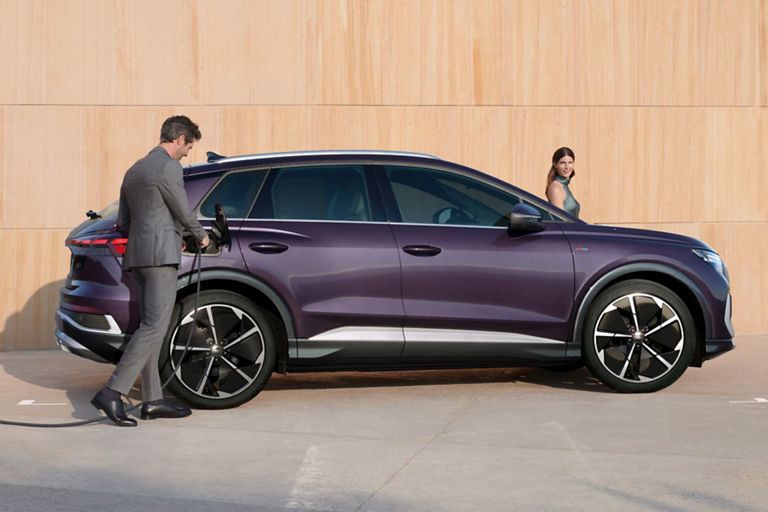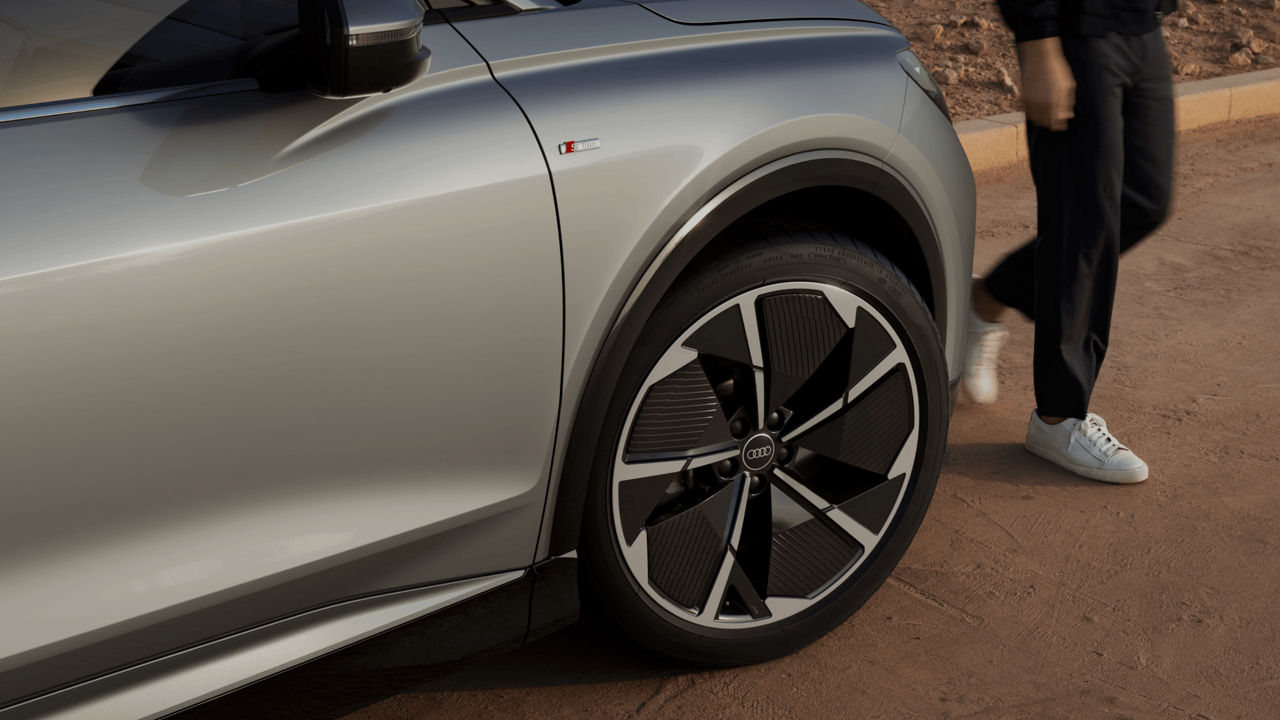
Battery & Range
Rapid charging
How often do I need to charge an electric Audi?
FAQs
<p>Audi e-tron cars use an intuitive system to calculate your mileage range. It factors in energy consumption from previous journeys; whether it’s been stationary for long periods of time; and the other factors such as if the car has been stationary for a period of time and whether features like air conditioning have been used.</p><p><br>Your car will always be recalculating the range based on previous driving data. When you first collect your new electric Audi, it’s normal to notice a range figure that’s different to what you’d expect, even on a full charge. This is because the car needs to ‘learn’ your driving habits before it can calculate a more accurate mileage range. Because the new car won’t have driven many miles, nor have much data on its new owner’s driving style, we recommend that you drive it for at least 300 miles on your regular routes to allow the car to give you a more realistic estimate based on your driving profile.</p><p><br>For these reasons, the range displayed in your electric Audi can regularly vary based on changes in driving conditions and on the above listed factors. You will notice a wider and more instant variance on range in electric vehicles than you do with fuel consumption for petrol or diesel powered cars.</p><p><br></p>
<p>If you’re charging from a home wallbox, we advise installing an Ohme intelligent charger and switching to <a href="/en/electric/offers-and-incentives/ovo-energy/" data-sce-target="_blank">OVO energy</a> to save you money on your home charging costs. On the road it’s more variable. To avoid paying over the odds when you need to fill up on a long journey, take a look at our <a href="/en/electric/charging/audi-charging-service/" data-sce-target="_blank">Audi charging service</a>, which simplifies and can reduce the cost of public charging.<br></p>
<p>Audi e-tron cars come with the equipment to charge in three different ways.</p><p><br>The most commonly used cable is the AC charging cable which you use with your home wall box or at public charging stations. This is known as a Mode 3 charging cable 22kW (AC).</p><p><br>The second cable is a household 3-pin plug. Charging with this cable will be very slow, however this option may be a useful fall back in case of emergency in the absence of a home or public charging point. You use this cable alongside the charging system, which also comes with your e-tron (capable of charging up to 11kW). You simply connect the 3-pin lead into the charging system box, and then plug the attached AC cable into your car- think of it as an adaptor!</p><p><br>Finally, the third cable is one that is perhaps used least often for most people - the industrial plug. This is a 7.4kW single phase CEE32 blue 32 amp cable and isn't as common in the UK as in other European countries. You're most likely to use it at campsites or in workshops for example. You use this cable with your charging system as well, just like you would above in the 3-pin cable.</p><p><br>If you have any questions about the cables that come with your e-tron or how to use them, please speak to your local Audi Centre. Information correct at February 2024.<br></p>
<p>There are now thousands of public charging stations across the UK. Latest locations and stats can be found on Zap-Map.</p><p><br>Historically, the charging infrastructure has mainly been focused on slower charging stations. But now that there are more electric vehicles with faster charging capabilities, rapid charging points are increasingly available.</p><p><br>Charging station accessibility does vary across the UK, with some areas having more accessible infrastructure than others.</p><p><br>Ultra rapid charging stations like Ionity are still limited in the UK, with numbers planned to increase.<br></p>
<p>You can charge using a 3-pin household socket and the Audi Compact Charging System (which comes with the car). However, the charging time will be very slow and is not as efficient as having a home wall box installed. You should contact an electrician before plugging into a domestic socket for the first time as:</p><p><br>i. Suitability for charging using a domestic socket will depend on the condition of the wiring in your home</p><p><br>ii. If the domestic socket is on the same circuit as other appliances, particularly those in frequent use, the additional amperage may be enough to trip a breaker switch</p><p><br>iii. Establishing a separate circuit for charging will help make sure the car is fed a full night of uninterrupted current. We recommend using an electric vehicle home wall box with its own separate circuit</p><p><br>Audi recommends you keep the Compact Charging System in the vehicle in case of an emergency or temporary need to plug in to a 3-pin socket whilst away from home. For your home, we recommend you install a wall box. Our recommended supplier is Ohme.<br></p>
<p>Sometimes, your Audi will display as fully charged if it has reached a charging target that is lower than 100% as set in the MMI. To check if a charging target has been set, please check your vehicle’s charging target via the MMI screen.</p><p><br>If a target has been set, you can change the target to 100%, and then continue to charge to full capacity if needed.<br></p>


